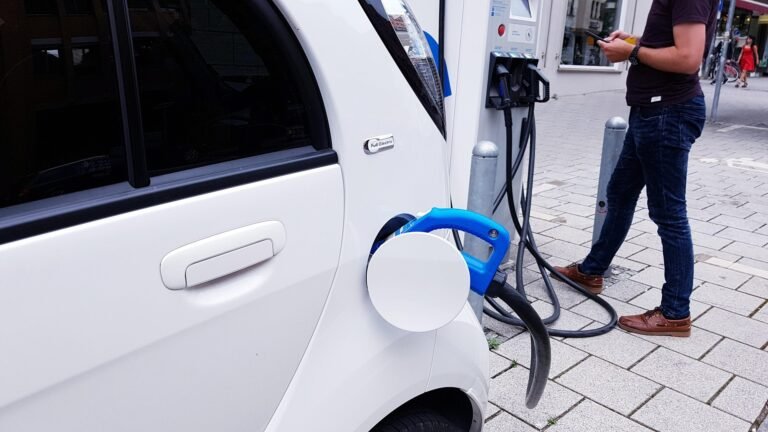By Antje Kayser, dpa.
Berlin (dpa) – Once temperatures drop below -10 degrees Celsius, it’s dangerous for people to sleep rough, says Franzi.
“Your body cools down quickly, especially if you’ve been drinking alcohol,” she explains.
Franzi is one of many volunteers driving a so-called Cold Bus, an initiative to provide relief for homeless people in German cities during the colder months.
Volunteers drive around in a bus every night until they spot someone they think might need their help, or until someone calls them to a specific location.
They begin by reaching out to the person sleeping rough, offering blankets, hot beverages, and meals, along with the option to provide a lift to a homeless shelter.
Franzi, 31, is based in Berlin and has been working with the organization operating the buses for six years.
Tonight, she and her colleague Matthias are stocking one of the organization’s three buses with donated sleeping bags and hot tea, before they set off.
“You always find someone,” says Matthias. This evening is relatively mild at eight degrees.
When passers-by phone the call centre to report having spotted someone who might need help, the request is transferred to an app.
The volunteers on the buses can then see the location on a tablet, including any additional known details, like what the person is wearing or the state they’re in.
Red means urgent action needed
The call centre uses a colour scheme to mark the urgency of each case: green means the call-out doesn’t need to be dealt with immediately, because the person may be sitting in a warm place, for example in a hospital or a bank.
Yellow is urgent and red is very urgent – “if a person is walking around in a T-shirt and barefoot in these temperatures,” says Matthias.
Franzi says she always tries to take people to emergency shelters close to where they boarded the bus as homeless people “often tend to stick to a specific neighbourhood.”
Otherwise they would have to travel a long way back the next day, she explains.
Franzi’s mission to support the homeless
It’s Franzi’s fourth winter driving a Cold Bus. She is also studying to become a social worker and works in addiction support.
“People can fall out of society very quickly,” she says. Her motivation is to show these people that they are not alone and to restore a little of their dignity. Sometimes that just means listening to someone talk.
While the bus takes Peter, 57, from one emergency shelter to another, Franzi asks him what life looks like for him at the moment.
Peter explains that he was recently discharged from the hospital and, for the first time in his life, has no home.
He spent several days drinking only vodka until social workers found him and took him to an emergency shelter. However, he couldn’t stay there as it was meant for people struggling with drug addictions.
Peter, who has trouble walking, is unfamiliar with how the shelters operate.
‘I’ve laughed, cried and sung on this bus’
Not every person who rides on the bus likes to share their story.
People who have been homeless for a long time tend to be a bit more closed off, says Franzi. They usually only start to open up after you’ve seen them several times.
“Our work also involves a lot of relationship building.”
Those who have only recently come to live on the streets often say more. “I’ve laughed, cried and sung on this bus,” Franzi says.
The number of people without a home has increased significantly in the past few years since the coronavirus pandemic, the volunteer says, as “people lost their jobs during the pandemic and could no longer pay rent.”
The pandemic also saw a rise in mental illness and addictions, she says.
Those without a support network were worst hit, with counselling and other offers of support also less available during that time.
The volunteers can often tell from a distance whether a person will accept their help, depending on how many belongings they have and how much food and drink they are carrying.
If they leave their belongings somewhere, there is a risk that they will be gone the next day because luggage cannot be taken into the shelters indefinitely.
Some people have also had bad experiences in emergency shelters and therefore prefer to take a thick sleeping bag from the volunteers.
Showers, toilets, coffee and breakfast in the morning
Emergency shelters are “not a great place,” says Franzi. In many facilities, dozens of people sleep in the same room, separated only by privacy screens.
“You also shouldn’t forget what these people go through. They’re outside all day, exposed to the elements. It’s incredibly exhausting,” says Franzi.
Plus, not everyone staying at the shelter gets along, due to “clashing characters and nationalities.”
On the upside, there are showers, toilets, coffee and breakfast in the morning before they head back out.
According to Berlin’s Department for Social Affairs, the city has 1,165 emergency overnight accommodation places available this winter as part of a cold weather relief programme.
The exact number of homeless people in the German capital is unclear.
According to the organization that operates the Cold Bus, estimates range from thousands to tens of thousands.
Last winter, the cold buses drove 1,580 homeless people to a shelter, 237 more than in the previous year, and the organization expects another increase this winter.
Source: dpa.com


















